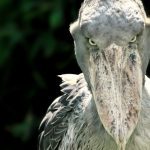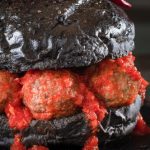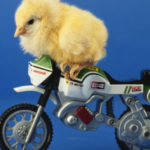 Mysteries
Mysteries  Mysteries
Mysteries  History
History 10 Surprising Stories About the Texas Rangers
 Humans
Humans 10 Philosophers Who Were Driven Mad by Their Own Theories
 Miscellaneous
Miscellaneous 10 Video-Game-Worthy Weapons and Armors from History
 Weird Stuff
Weird Stuff 10 Psychics Who Accurately Predicted Wartime Events
 The Arts
The Arts 10 Pieces of Art Inspired by a Broken Heart
 Health
Health 10 Science Fiction-Sounding New Medical Treatments
 History
History 10 Surprising Facts About the Father of Submarine Warfare
 Space
Space Ten Astonishing New Insights into Alien Worlds
 Weird Stuff
Weird Stuff 10 Bizarre Summer Solstice Rituals Still Practiced Today
 Mysteries
Mysteries Top 10 Haunting Facts About the Ghost Ship MV Alta
 History
History 10 Surprising Stories About the Texas Rangers
 Humans
Humans 10 Philosophers Who Were Driven Mad by Their Own Theories
Who's Behind Listverse?

Jamie Frater
Head Editor
Jamie founded Listverse due to an insatiable desire to share fascinating, obscure, and bizarre facts. He has been a guest speaker on numerous national radio and television stations and is a five time published author.
More About Us Miscellaneous
Miscellaneous 10 Video-Game-Worthy Weapons and Armors from History
 Weird Stuff
Weird Stuff 10 Psychics Who Accurately Predicted Wartime Events
 The Arts
The Arts 10 Pieces of Art Inspired by a Broken Heart
 Health
Health 10 Science Fiction-Sounding New Medical Treatments
 History
History 10 Surprising Facts About the Father of Submarine Warfare
 Space
Space Ten Astonishing New Insights into Alien Worlds
 Weird Stuff
Weird Stuff 10 Bizarre Summer Solstice Rituals Still Practiced Today
Top 10 Impossible Things That Shouldn’t Exist
As humankind pushes against the limits of our knowledge, we often discover that seemingly impossible things can be very real. This strange frontier is filled with unsolved mysteries capable of adding remarkable new facts to our history books, sciences, and the natural world. From origami Pringles to solid liquids, here are 10 intriguing cases that broke all the rules.
Related: 10 Countries Missing Things You Thought Would Be Impossible
10 A Solid Liquid
For over 50 years, scientists have predicted the existence of a bizarre substance. Called a supersolid, it has the properties of both solids and liquids. In other words, while it flows like a liquid, it maintains the crystalline structure of a solid. As intriguing as that sounds, most researchers agreed that it couldn’t be done.
When supersolids finally showed up, their invention story was equally unusual. Two unrelated teams—one from MIT in Massachusetts and the other in Zurich, Switzerland—announced in the same year and month (November 2017) that they had created supersolids. Even more remarkably, they used different approaches to create the exotic substance. But at the end of the day, the result was the same, and “impossible” solid liquids are now a real thing.[1]
9 The Devil’s Hole Pupfish
The Devil’s Hole pupfish is defying several factors conspiring to wipe out the species. Trapped in a 10-foot by 20-foot (3 by 6-meter) cavern in Devil’s Hole, Nevada, they’ve been isolated from other pupfish for between 1,000 and 20,000 years. Recent research found that the fish are so inbred that they shouldn’t be alive. Indeed, their genomes are, on average, 58% identical, possibly making them the most inbred animals on Earth.
To compound the mystery of how these fish still exist, the same 2022 study also found that they have lost two crucial genes—one for sperm production and one that helps other pupfish survive in low-oxygen environments. Despite this, the Devil’s Hole pupfish have babies and live in a stagnant pool that is incredibly deoxygenated.[2]
8 The Ninth Dedekind Number
In mathematics, there’s a sequence of numbers that becomes increasingly difficult to calculate. First described in the 19th century, Dedekind numbers can be tough to grasp by non-mathematicians. A threadbare explanation would be that they result from logical problems called “monotone Boolean functions” (MBFs) where the input is a particular spacial shape. So, as the numbers progress, they might relate to a square, then a cube, then ever-increasingly complex hypercubes.
Experts hit a wall with the ninth Dedekind number or D(9). Due to its sheer complexity and the required computing power to crack the number, it was soon declared as “impossible” to calculate. But in 2023, something remarkable happened. After 32 years, this impossible number was figured out by two different research teams who had no ties to each other. The fact that they arrived at the same number proved that D(9) had finally been ousted.
But the story’s not quite over. Mathematicians have now turned their attention to D(10). However, this number might forever stay out of reach. Supercomputers revealed D(9), but they cannot handle the new problem. Calculating the 10th Dedekind number requires processing power equal to the Sun’s total power output.[3]
7 Moon Rust
The Moon shouldn’t be rusting, but it is. A few years ago, this puzzling discovery arose when researchers examined data and images collected during the Chandrayaan-1 orbiter mission. Geologists noticed that rocks at the lunar poles reflected light differently than the rest of the Moon’s surface. A closer look revealed that this was caused by hematite, a form of rust.
So, why is this impossible? The Moon lacks two requirements for rust, and that is water and oxygen. On Earth, rust occurs when iron is exposed to water and oxygen. The Moon has loads of iron-rich rocks, and while water was eventually discovered at the poles, there’s no getting past the fact that the Moon has no oxygen.
Researchers believe that the “missing” oxygen could come from Earth. Our globe has a magnetotail, a magnetic wake that trails behind the planet. It’s possible that this tail pulls some of Earth’s oxygen into space, where solar wind carries it to the Moon.[4]
6 The Largest Quasicrystal
On an atomic level, crystals have a neat pattern that repeats. A quasicrystal is a crystal whose atoms arrange themselves in tile-like patterns that never repeat. First discovered in 1982, hundreds of quasicrystals have since been made in laboratories, and they can even be found in nature.
But they were all very small. Their particles were about 0.001% and 1% of a hair’s width. A large pattern was deemed impossible, and in 2023, when a scientist made a bet to prove bigger quasicrystals couldn’t exist, their colleagues responded with a bizarre experiment.
A computer simulation showed that larger particles, measuring 0.09 inches (2.4 mm) and 0.047 inches (1.2 mm), could feasibly exist for quasicrystals. About 4,000 steel balls of both sizes were placed in a shallow dish and jostled for a week. Incredibly, they arranged themselves into the tiled, non-repeating structure of a quasicrystal–which technically made the metal arrangement the biggest quasicrystal of all time.[5]
5 Avocados
It’s no mystery how avocado trees propagate today. Humans farm this lucrative and popular crop. But what experts cannot understand is how avocados survived before people fell in love with the fleshy green fruit.
Here’s the problem: thousands of years ago, the avocado evolved to multiply only with the help of megafauna like mammoths and giant ground sloths that swallowed the avocados whole, traveled a distance, and then pooped the seed out. Presto, a new avocado tree.
Then, disaster struck. About 13,000 years ago, a mass extinction wiped out the great mammals in the Western hemisphere, and the animals the avocado couldn’t live without were gone forever. Technically, the trees should’ve gone extinct. But avocados kept on producing fruit for creatures that didn’t exist—and the wild avocado today also seems to be clueless that they’re gone because it relies on the same ancient method of seed dispersal.
How did these trees make it to modern times without megafauna? Nobody really knows. The avocado remains an evolutionary failure (having lost its seed dispersers) and a remarkable, albeit mysterious, survivor.[6]
4 Origami Pringles
Mathematically speaking, the shape of a Pringle is called a hyperbolic paraboloid. The wavy form seems simple enough, but when you bring origami into the picture, things get weird. According to scientists, it should be impossible to create a 3D hyperbolic paraboloid by folding a single piece of paper.
But here’s the twist. Artists have been creasing paper into perfect Pringles for years. One of these artists is called Erik Demaine. He is also a computer science professor at MIT and the world’s top computational origami theorist. Even though he has the credentials to crack this mystery, and he folds paper sculptures that pop into the famous saddle shape, Demaine, like so many of his peers, admits that he isn’t sure how it works.
All Demaine knows is that handmade folds alone cannot account for the end result. Once he folds the paper in a certain way, the entire structure follows yet unexplained physics to settle naturally into a 3D hyperbolic paraboloid.[7]
3 A Mirror in Space
In 2023, researchers looked at a distant planet called LTT9779. Discovered a few years prior, this world shattered a rule stating that gas giants of this size (think five times bigger than Earth) couldn’t closely orbit their star without being destroyed. And yet, the massive planet continues to travel a tight 19-hour “year” around its sun, and by all means, it should have been vaporized a long time ago.
The recent study found a bizarre clue that might explain everything. LTT9779 is covered in metallic clouds. Besides the interesting ability to rain titanium, these clouds are also so reflective that scientists now call this planet the largest known “mirror” in existence. To provide some perspective, Earth reflects about 30% of sunlight back to our Sun while LTT9779 reflects an astonishing 80%. No other planet is this shiny.
The luminous clouds most likely act as a shield that blocks enough sunlight to prevent the planet from heating up and evaporating. Being metallic, the clouds also make LTT9779 and its atmosphere heavier, making it even more resistant to being blown away by its star.[8]
2 Sturddlefish
Somewhere in Hungary, there are fish tanks that hold the world’s only population of sturddlefish. Standing at about 100 individuals, they’re extremely rare, but ironically, they are also plentiful because, before 2020, not a single sturddlefish existed. So, where did they come from? A laboratory accident.
Scientists were trying to breed the critically endangered Russian sturgeon and decided to hatch sturgeon eggs via a process called gynogenesis. During this type of reproduction, the eggs only need sperm to trigger the babies’ development and not to share the father’s DNA. The resulting offspring only develop from the mother’s DNA. So, when researchers used a different species as a sperm donor, the endangered American paddlefish, they expected only sturgeons to be born.
Nature had other ideas. The fry hatched as sturgeon-paddlefish hybrids—something that was deemed impossible. The two fish species did share a common ancestor 184 million years ago. Some experts speculate that since both parents are living fossils with slow evolutionary rates, maybe being separated by 184 million years didn’t change them past the point where they couldn’t breed.[9]
1 Everything
According to scientists, the universe should not exist. By that reasoning, nothing should exist since everything we know lies within the universe. This unsettling conclusion was revealed in 2017 when researchers confirmed that the universe should never have made it this far (to the grand old age of 13.8 billion years). Instead, it should’ve died during its birth.
Here’s why. As far as we know, the Big Bang created equal quantities of matter and antimatter. Whenever these odd twins meet, their opposite charges cause the instant annihilation of both. One theory holds that there must be a crucial difference between matter and antimatter that prevented the catastrophic destruction of the universe. But when the brightest minds at CERN in Switzerland compared them in the most detailed study yet, the results showed that matter and antimatter were dangerously identical—there was no lifesaving difference.
And yet, the universe survived its lethal birth, proving that an unknown mysterious factor stepped in and saved the day.[10]








